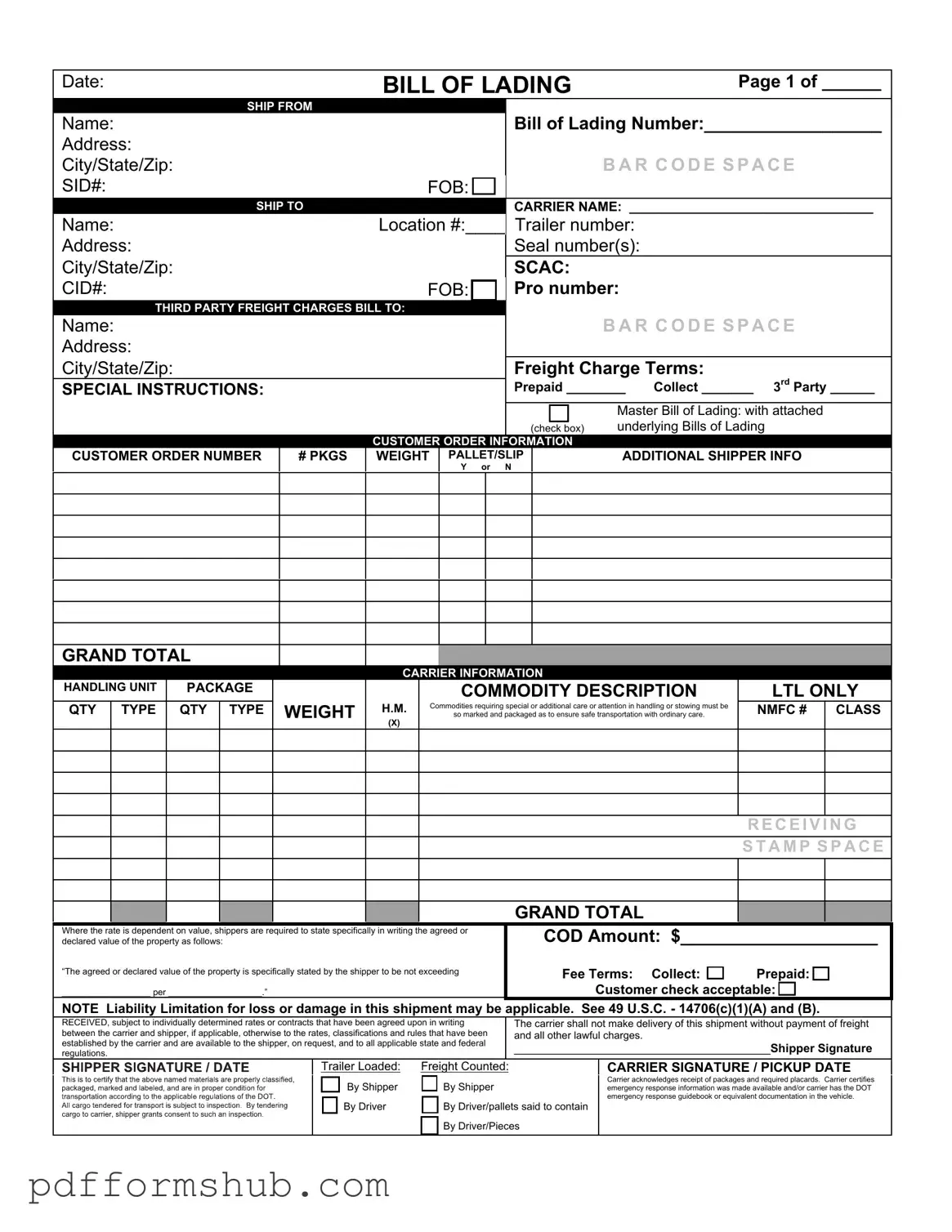The Bill of Lading with a Supplement form plays a crucial role in the transportation and shipping industry, serving as a vital document that outlines the terms and conditions of the shipment of goods. This form not only acts as a receipt for the cargo but also establishes the contract between the shipper and the carrier. It includes essential details such as the names and addresses of the shipper and consignee, a description of the goods being transported, and any specific instructions regarding handling or delivery. Additionally, the Supplement section allows for the inclusion of extra information or special terms that may not be covered in the standard Bill of Lading. This flexibility is particularly important for complex shipments that require additional documentation or stipulations. Understanding the components of this form is essential for anyone involved in shipping, as it helps ensure compliance with legal requirements and facilitates smooth transactions. Furthermore, the accuracy of the information contained in the Bill of Lading with a Supplement can significantly impact liability and claims processes, making it imperative for all parties to review the document thoroughly before signing.
